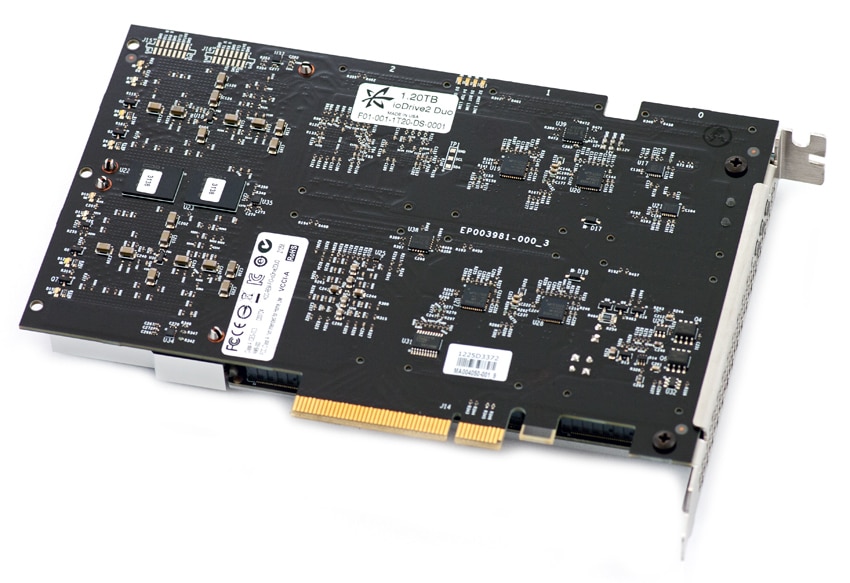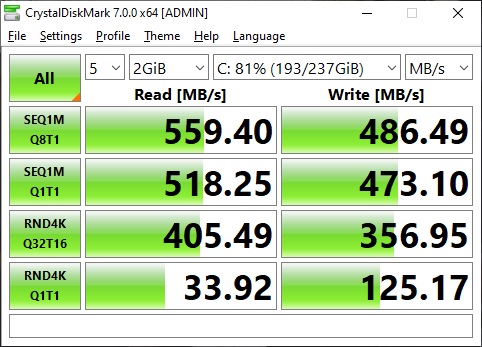As I described in a previous article, Fusion-IO cards are not natively supported by VMware ESXi.
After installing the card and restart the server, you can see that it claims there is no persistent storage available, not even a lun or local disk to be formatted:
So, we need to intall Fusion-IO drivers. They are available for ESX(i) 4.0, 4.1 e 5.0. Having driver in .vib format, you can use the usual method like any other third party driver inside an ESXi server, first copying the .vib file inside ESXi and then issuing this command from the command line (or via ssh):
Finished the installation you need to reboot ESXi, and when it comes up again you will have two new elements in ESXi: a new “IOMemory VSL” among the storage adapters, and a 600 Gb local disk (identified by ESXi as SSD):
So I just built a new Proxmox host and added a 640Gb Dell branded FusionIO drive (this one to be exact) and it seems like driver support for it is a little more lacking then I thought, it looks like I'll have to compile my own, but most of the guides for Proxmox are a little old and I don't want to use one intended for straight Debian since there are some differences. Itch.io won't take a cut of game sales on May 14th an hour ago. Discord is making it easier to find servers hosting live speakers 4 hours ago. Sony reveals new galaxy-inspired PS5 DualSense. Buy Fusion-IO ioDrive II 785GB MLC SSD Solid State Drive PCIe 2.0 x8 Accelerator Drive Card Dell F00-001-785GB-CS-0001: Electronics - Amazon.com FREE DELIVERY possible on. Comments Off on Installing Fusion-io/Sandisk ioDrive2 drivers on CentOS7 with LUKS encryption and posted in Just For Fun, Security And Hacking I was working on a Mongo database server that was going to be running a Fusion-io/Sandisk ioDrive2 card for wicked speed, and also needed to do on disk encryptionfun task. Newsletter sign up. Take A Sneak Peak At The Movies Coming Out This Week (8/12) 2021 BRIT Awards highlights.
From here, you can format the disk with VMFS and use it as a “common” local datastore, but also as host cache.
CIM Providers
If you want to monitor the card health and status, the only way to do it directly from ESXi is to install CIM Providers. Fusion-IO, like many other hardware vendors, gives you their CIM providers for several ESXi versions.
To install them in ESXi 5.0, you first need to place your server in maintenance mode.
You will then upload the software into ESXi, and you will install it using this command:
(no-sig-check is needed since the software is not digitally signed); you will finally put ESXi out of the maintenance mode.
the Fusion-IO card is now ready to host virtual machines.

This article was last updated April 2011.
Any time the kernel is upgraded, you’ll need to recompile and reinstall the drivers. As such, it is important to plan your kernel upgrades in advance and perform testing after the first boot using a new kernel.
If you are an IBM customer using IBM High IOPS adapters, please refer instead to the latest IBM documentation, drivers and firmware located at IBM Fix Central.
The 2.3.x driver builds and runs on a much wider range of kernels than the 1.2.x driver series. It accomplishes this using a new portability layer to abstract itself away from the operating system internals. By following the procedure below, you will obtain a working driver, built for the specific kernel running on your system.
Follow the instructions based on the version of your driver.
Building the Fusion-io Drivers From Source
To view a step-by-step screencast of this process, click here.
Before beginning, download the ioDrive driver source rpm for RHEL from the Dell Fusion-io support site to a temporary directory. At minimum, you’ll need the latest version of the following packages:
- fio-common
- fio-firmware
- fio-sysvinit
- fio-util
- iomemory-vsl
- libfio

Here’s a screenshot showing the packages that need to be downloaded.
Remove prior versions of the ioDrive driver rpm Nds rom hacks download.
For Red Hat Enterprise 5, install the gcc 4.x and kernel-devel packages for your current kernel. The kernel-headers package is also needed, but is typically installed as part of the base operating system.

Change to the directory where you downloaded the ioDrive driver source RPM and begin the rebuild process.
Install the newly-built drivers. Actix crack keygen serial key.
Check the status of the ioDrive(s):
Upgrading the Fusion-io Firmware
In the previous section, you should have already downloaded and installed the latest firmware package. If not, you may download the fio-firmware package from the Fusion-io Support website to proceed. Once the firmware package is installed, it needs to be applied to the cards.
To upgrade the firmware:
Watch the output of the upgrade process and reboot when complete.
Update the Fusion-io Init Scripts
Uncomment the blacklist line:
Backup /etc/fstab, and modify it to add “noauto 0 0” to the datavg filesystems:


Example:
Dell Fusion Io Drivers
Mac miller blue slide park download. Uncomment “ENABLED=1” in /etc/sysconfig/iomemory-vsl to enable init script:
In the same /etc/sysconfig/iomemory-vsl file, add the RAID array(s) and mount points. For example:
Dell Fusion Io Drivers Free
Enable the init script: